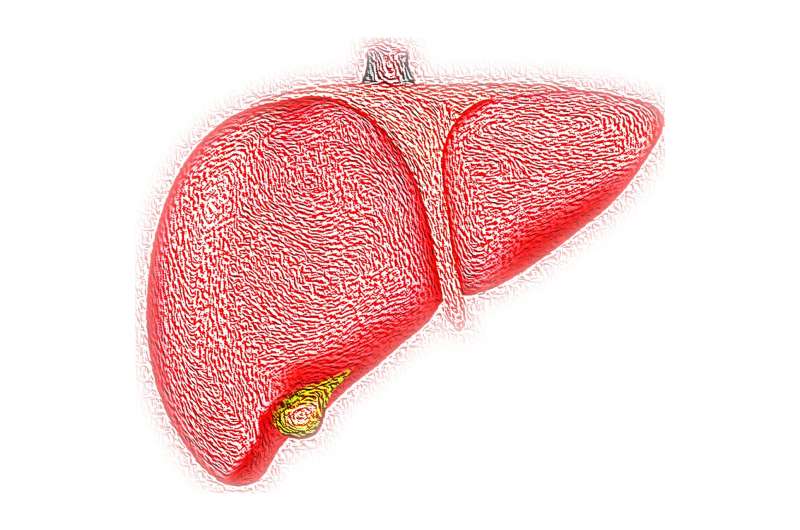This article has been reviewed according to Science X's editorial process and policies. Editors have highlighted the following attributes while ensuring the content's credibility:
fact-checked
peer-reviewed publication
trusted source
proofread
Changing levels of NOX4 protein could provide key to understanding fatty liver disease progression

The global rise in obesity and diabetes is leading to an epidemic in fatty liver disease affecting 20%–30% of the world's population. Almost a third of people with fatty liver disease go on to develop an advanced form of the disease, known as non-alcoholic steatohepatitis (NASH) that can progress to cirrhosis and end-stage liver disease, or even liver cancer, and is a major risk factor for cardiovascular disease.
Why some people remain relatively healthy with fatty liver disease and some go onto potentially life-threatening illness has been a mystery. Until now.
A study published in The Journal of Clinical Investigation led by Professor Tony Tiganis from Monash University's Biomedicine Discovery Institute, has shown that the levels of the NOX4 protein change as the disease progresses—rising in the early stages of the disease to protect the liver, but declining as the liver disease gets worse.
The researchers found that removing NOX4 in obese mice led to NASH and liver damage. And when NOX4 levels were artificially raised in these mice they were protected from NASH and liver damage.
Importantly, the discovery provides evidence for a therapeutic avenue for a disease whose prevalence is predicted to balloon by 63% from 2015 to 2030.
According to Professor Tiganis, the precise mechanisms that govern the transition to NASH and liver damage have remained unclear.
"It has been perplexing why the majority of patients with fatty liver disease don't progress to more severe disease," he said.
The researchers have shown that this is because NOX4 is induced when the liver first starts to accumulate fat and activates a complex adaptive program that protects the liver. It is only when NOX4 levels decline and this adaptive program is abrogated that obese patients with fatty liver progress to NASH and liver damage.
Importantly, previous studies by Professor Tiganis and others have shown that the raising of NOX4 levels in skeletal muscle or in the heart after exercise protects against damage, promotes muscle and cardiac function and prevents the metabolic decline otherwise associated with aging.
"Compounds that bolster the activity of NOX4, or the adaptive program that NOX4 instigates, may be highly beneficial, countering not only the development of NASH, but also improving skeletal and cardiac function, as well as metabolic health," Professor Tiganis said.
Such compounds are found naturally in cruciferous vegetables, such as broccoli or cauliflower.
More information: Mitochondrial- and NOX4-dependent antioxidant defence mitigates progression to non-alcoholic steatohepatitis in obesity, Journal of Clinical Investigation (2023). DOI: 10.1172/JCI162533


















